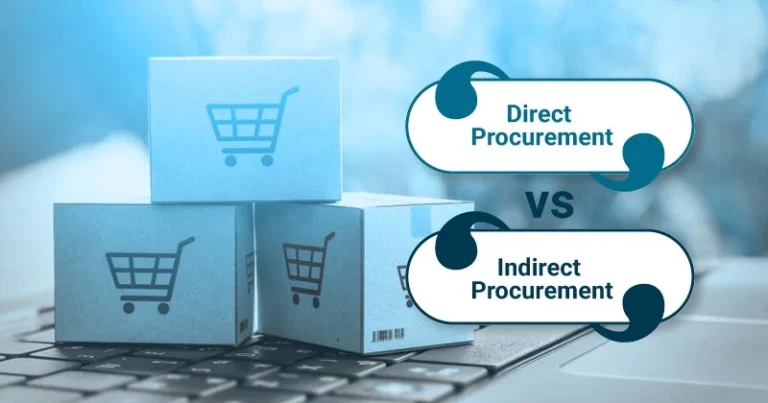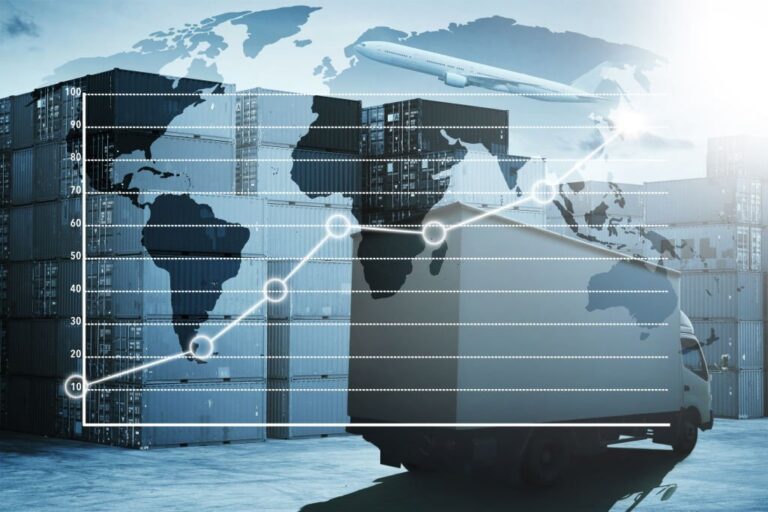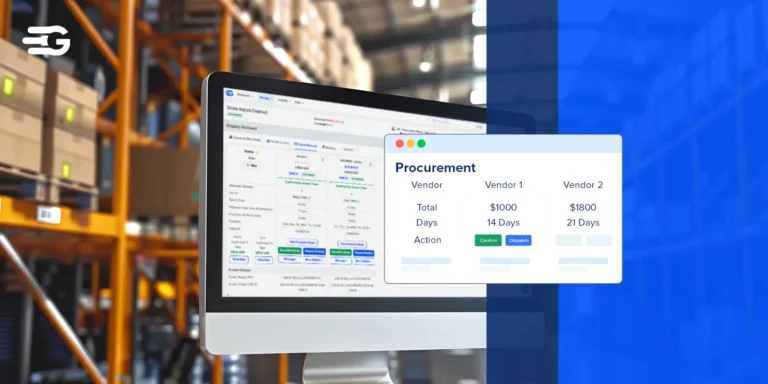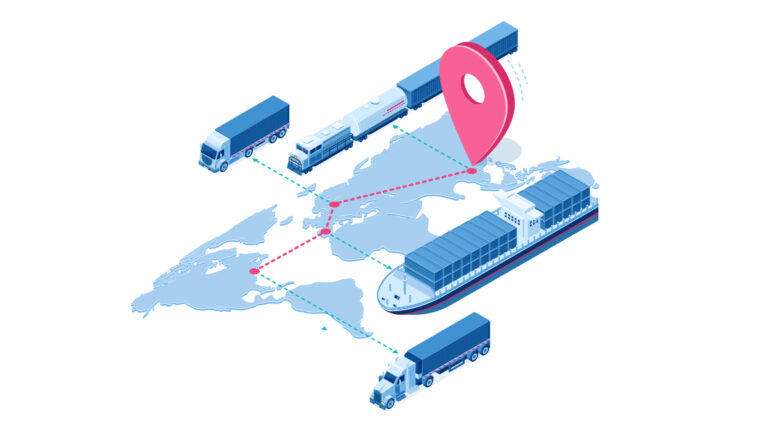Implementing Responsible Sourcing for Ethical Procurement
Ethical procurement is not just a philosophical node of the supply chain, but goes far beyond. It’s about ensuring your entire supply chain operates with integrity while managing the tightrope walk of adhering to the social responsibility that covers aspects of fair labor practices, environmental sustainability that dictates responsible waste management and resource conservation, and legal compliance.
Responsible procurement is the obligatory route to establish ethical procurement as it is a practice that emphasizes ethical sourcing, ethical procurement minimizes risks like corruption and human rights violations. Ethical procurement as a larger part of ethical consumerism has become a critical differentiator, that offers intangible yet valuable, resources for a business on the outward in terms of reputation and brand loyalty, risk management, investor confidence, and inward supply resilience that is built on trust and broad sense of accepted business morality.
With the advent of e-procurement, the entire process has been simplified further, enabling responsible and ethical practices throughout.
The Pillars of Ethical Procurement and Responsible Sourcing
Procurement ensures your organization gets the right goods or services. It involves multiple steps: identifying needs, then sourcing – finding and evaluating suppliers. After selecting suppliers, contracts are negotiated. Once you need something shipped, a purchase order is placed with the chosen carrier. Finally, the procurement team monitors the delivery to ensure it arrives on time and in good condition.
Here’s a breakdown of the five pillars that underpin a successful procurement process:
1. Identifying the Need: This is where it all starts. The procurement team acts as a detective, uncovering the specific needs of different departments within the company. Do the engineers require a new batch of high-performance microchips? Is the marketing team in need of promotional materials for an upcoming campaign? Identifying these needs with precision ensures targeted sourcing efforts.
2. Sourcing: The Search Begins: Once the need is clear, the procurement team transforms into skilled researchers. They scour the market, evaluating potential suppliers who can deliver high-quality products or services that meet the company’s specific requirements. Factors like price, track record, and expertise are all meticulously considered. For physical goods, freight sourcing plays a crucial role. This involves finding reliable, cost-effective transportation companies to ensure timely and secure delivery.
3. Negotiation: Securing the Best Deal: With a shortlist of qualified suppliers, the procurement team gets down to business – negotiation! This stage is like a strategic chess match. The team works tirelessly to secure the most favorable terms for the company. This often involves negotiating price points, delivery timelines, and even specific quality guarantees. Every detail gets locked down in a formal contract, ensuring a legally binding agreement between both parties.
4. Order Placement: Putting the Plan into Action: With a negotiated agreement in place, the procurement team sends a purchase order to the chosen supplier. This order clearly outlines the specific goods or services requested, the agreed-upon price, and the delivery timeframe. It’s the official green light for the supplier to fulfill the order.
5. Monitoring and Delivery: The procurement team doesn’t simply place an order and walk away. They actively monitor the entire delivery process, which in turn means, end-to-end observation of the supply chain. This crucial step ensures the goods or services are delivered on time and meet the pre-established quality standards. Any potential delays or discrepancies are promptly addressed, enabling seamless supply chain visibility and operations.
Advantages of Embracing Responsible Sourcing
Let’s shed some light on the intricate pillars of procurement. It’s clear that these elements play a vital role in the broader supply chain. But what about responsibility? What makes it stand out?
In business terms, what’s the real value of responsible sourcing? Sure, we’ve touched on this before, but let’s dig a little deeper. Let’s cultivate a solid, objective understanding of these aspects.
1. Building Brand Advocacy: Consumers today are vocal about their values. When a company demonstrates a commitment to responsible sourcing, it resonates deeply. Imagine your brand being associated with fair labor practices and environmentally conscious suppliers – that’s a powerful marketing message that organically attracts customers who share your values.
2. Mitigating Risk and Ensuring Resilience: Cutting corners on sourcing might seem attractive in the short term, but the risks can be catastrophic. Unethical practices like using suppliers with poor safety records or lax environmental standards can lead to costly fines, legal repercussions, and even production delays. Responsible sourcing, on the other hand, is a proactive approach to risk management. By partnering with suppliers who prioritize ethical practices, the chances of building a resilient supply chain are less susceptible to disruptions and legal headaches become more.
3. Attracting Top Talent and Investors: The talent pool is competitive, and socially conscious employees are actively seeking companies that align with their values. Demonstrating a commitment to responsible sourcing makes your company a more attractive employer, drawing in top talent who want to contribute to a purpose-driven organization. Similarly, responsible sourcing practices resonate with environmentally and socially conscious investors. This opens doors to valuable investment opportunities, fueling your company’s growth and future endeavors.
Building Sustainable Supplier Relationships
Responsible sourcing isn’t just about compliance; it’s about fostering a culture of collaboration and innovation within your supply chain. By working with ethical suppliers who share your commitment to sustainability and fair practices, you open doors to new ideas and solutions. Responsible sourcing creates a win-win scenario, where collaborative efforts drive innovation and unlock new growth opportunities for everyone involved.
Communication is the breeding ground for building sustainable relationships, which is a fact not just for the supply chain but for life.
In the context of the supply chain, establishing open communication channels with your suppliers denotes a powerful message – you value your suppliers as partners, not just vendors.
This fosters trust and loyalty. Reliable suppliers who see you as a valued partner are more likely to go the extra mile, ensuring timely deliveries and consistent quality.
Open communication also allows for proactive problem-solving. If a supplier faces a potential roadblock, they’re more likely to reach out and work with you to find a solution.
Responsible sourcing encourages collaboration and transparency. By sharing best practices and sustainability goals with your suppliers, you’re fostering innovation within your entire supply chain.
This collaborative approach creates a win-win situation, where both companies benefit from increased efficiency, reduced risks, and a shared commitment to a sustainable future.
Ultimately, responsible sourcing builds bridges, not transactions. It fosters long-term partnerships fueled by mutual respect, shared values, and a commitment to ethical practices. This foundation of trust lays the groundwork for a thriving and sustainable supply chain and business ecosystem for all.
Implementing Responsible Sourcing Practices
Now that we have discussed the why, the consequent question remains, how? Here’s a step-by-step approach to get you started in building responsible sourcing:
Step 1: Define Your Sustainability Goals and Values:
- Start with introspection: What are your company’s core values regarding social responsibility and environmental sustainability? Do you prioritize fair labor practices? Is minimizing your environmental footprint a key goal? Clearly defining these values sets the foundation for your sourcing strategy.
- Develop a comprehensive policy: Translate your values into a concrete policy outlining your expectations for responsible sourcing. This policy should address issues like fair labor practices, environmental sustainability, and ethical business conduct within your supply chain.
Step 2: Assess Existing Supplier Relationships:
- Evaluate current suppliers: Start by evaluating your current supplier base. Do their practices align with your newly defined values and sustainability policy? You can conduct surveys or on-site audits to assess their labor practices, environmental policies, and commitment to ethical sourcing.
- Identify potential gaps: Based on your evaluation, identify any gaps between your suppliers’ practices and your company’s expectations. This helps you prioritize which suppliers need additional support or may require reassessment.
Step 3: Developing a Responsible Sourcing Strategy:
- Supplier selection criteria: Revise your supplier selection criteria to incorporate responsible sourcing practices alongside traditional factors like price and quality. Develop a scoring system that assigns weight to factors like labor standards, environmental impact, and commitment to ethical sourcing.
- Supplier engagement: Engage with your existing suppliers and communicate your new sustainability policy. Collaborate with them on improving their practices and offer support where needed. This fosters trust and encourages them to commit to responsible sourcing alongside your company.
Step 4: Implementation and Monitoring:
- Develop a responsible sourcing program: Design and implement a program to monitor your suppliers’ compliance with your sustainability policy. This may include conducting regular audits, requiring them to submit progress reports, and establishing clear communication channels.
- Transparency and reporting: Be transparent about your efforts towards responsible sourcing. Publish your sustainability policy and communicate your progress towards achieving your goals in annual reports or dedicated sustainability reports.
Step 5: Continuous Improvement:
- Regular review and update: Responsible sourcing is an ongoing journey. Regularly review your supplier performance, your sustainability policy, and industry best practices. This ensures your approach remains relevant and adapts to evolving standards.
- Open communication and collaboration: Maintain open communication channels with your suppliers. Encourage continuous improvement by sharing best practices and collaborating on solutions to address any challenges they might face.
Leveraging GoProcure for Ethical Procurement
Implementing responsible sourcing can seem daunting, especially for companies without dedicated sustainability teams. Here’s where innovative software solutions step in, streamlining the process and making ethical procurement more accessible.
Introducing GoProcure, a comprehensive software solution designed by GoComet specifically to empower companies in their journey towards responsible sourcing.
GoProcure acts as your ethical procurement partner, assisting you in every stage of the process. It provides features like:
- Sustainability risk assessments: GoProcure helps you evaluate potential and existing suppliers against your defined sustainability criteria. Identify risks and opportunities for improvement with ease.
- Streamlined communication and collaboration: The platform provides a centralized communication hub to foster collaboration with suppliers. Share best practices, track progress toward sustainability goals, and maintain transparency throughout the supply chain.
- Automated reporting and data analysis: Generate comprehensive reports on supplier performance and your overall progress toward responsible sourcing goals. Gain valuable insights to make informed procurement decisions.
Overcoming Challenges in Ethical Sourcing
Ethical sourcing offers a clear path toward a sustainable and responsible future, but navigating its intricacies can be tricky. Here are two common challenges companies face and strategies to overcome them:
- Limited Supply Chain Visibility: Modern supply chains are complex, with multiple tiers and actors. Tracing the origin of materials and ensuring ethical practices throughout can be a daunting task.
Solutions:
- Technology to the rescue: Invest in technology solutions that map your supply chain and provide transparency. These tools can track materials and labor practices from raw sources to your doorstep, giving you a clear picture of your ethical footprint.
- Collaboration is key: Build strong relationships with your suppliers. Encourage them to adopt transparent practices and share relevant data to improve overall supply chain visibility.
- Perceived Higher Costs: Ethical suppliers might initially appear more expensive than traditional options, especially if they prioritize fair labor practices and sustainable production methods.
Solutions:
- Looking beyond the initial price tag: Consider the long-term benefits. Ethical sourcing reduces risks associated with unethical practices, fosters brand loyalty, and strengthens your reputation. These intangible benefits can outweigh the initial cost difference.
- Creative cost-cutting: Work collaboratively with suppliers to find cost-effective solutions that benefit all parties. Explore innovative production methods, material sourcing, or logistics strategies to bridge the price gap.
Measuring the Impact of Responsible Sourcing
Monitoring and fine-tuning the effectiveness of responsible sourcing is important. Here are some key metrics:
- Reduced supplier risk: Track the number of audits conducted and potential risks identified.
- Improved labor practices: Monitor metrics like worker safety incidents and employee turnover rates within your supply chain.
- Environmental footprint: Measure your carbon emissions, water usage, and waste generation associated with sourced materials.
- Supplier diversity: Track the percentage of diverse suppliers you partner with, promoting social inclusion within your supply chain.
By monitoring these metrics, you can gauge the effectiveness of your responsible sourcing initiatives and identify areas for continuous improvement. Remember, responsible sourcing is a journey, not a destination, and measurement is key to staying on track.
Future Trends in Responsible Sourcing
Responsible sourcing is no longer a fad; it’s a transformative force shaping the future of procurement. Here’s a glimpse into what’s on the horizon:
- AI-powered Audits: Enabled by software and artificial intelligence the advanced algorithms will analyze everything from labor practices to environmental regulations, allowing companies to proactively address issues before they snowball.
- Embracing the Circular Revolution: Gone are the days of linear “take-make-dispose” models. Businesses will prioritize sourcing materials from recycled content or implementing closed-loop systems where used products are transformed back into raw materials. Think of car manufacturers incorporating recycled plastics into vehicle components or fashion houses utilizing post-consumer waste for new clothing lines.
- Beyond Tier 1: Mapping the Ethical Landscape: The focus will shift from immediate suppliers to a holistic view of the entire supply chain. Blockchain technology will play a crucial role here, creating an immutable record of materials’ origin and production practices across every tier. This allows companies to ensure ethical practices aren’t compromised further down the line, even in remote corners of the globe.
- Collaboration is King (and Queen): Companies won’t be going it alone. The future of responsible sourcing hinges on collaboration. We’ll see a rise in partnerships between businesses, NGOs, industry experts, and even consumers. Imagine co-creating ethical sourcing standards with industry peers, or crowdsourcing solutions to tackle complex challenges in specific regions. This collective effort will drive systemic change and create a more sustainable future for all.
Conclusion: The Ethical Path Forward in Procurement
Responsible sourcing isn’t just about ticking a box on a sustainability report. It’s a strategic imperative that strengthens your brand, mitigates risks, and fosters long-term success. By embracing these emerging trends and prioritizing ethical practices throughout your supply chain, you become a leader in the movement toward a more sustainable and responsible future. Remember, the path forward is paved not just with good intentions, but with innovative solutions, collaborative efforts, and a commitment to making a positive impact on the world around you.






